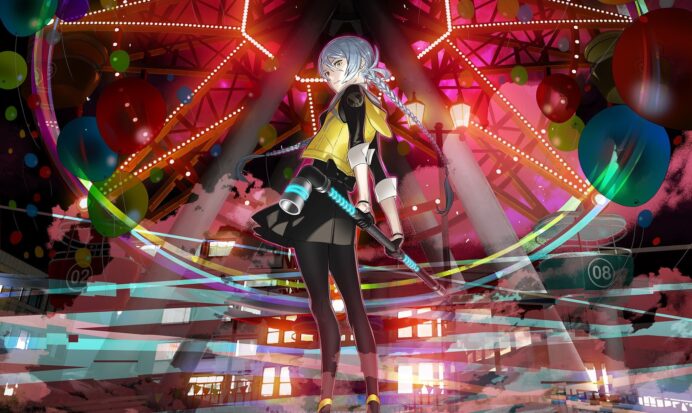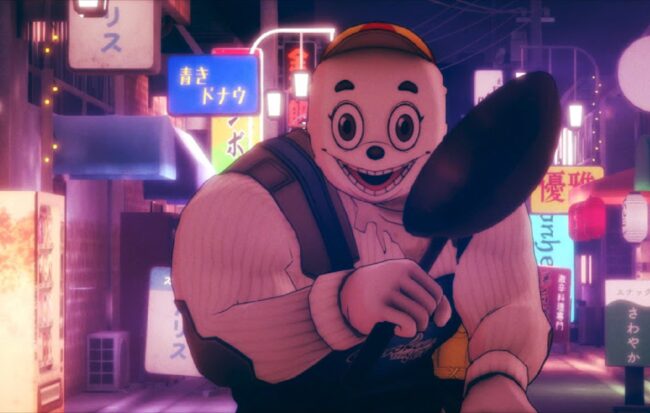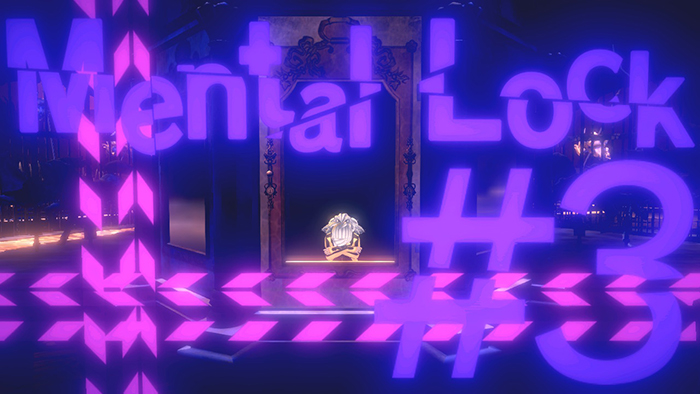
Reverse-Engineering a Living Archive

This column is a reprint from Unwinnable Monthly #149. If you like what you see, grab the magazine for less than ten dollars, or subscribe and get all future magazines for half price.
———
Analyzing the digital and analog feedback loop.
———
Some things don’t translate well into game mechanics but are conceptual gold nonetheless. In training I’m an English literature and culture grad and a narrative designer who can’t get enough of research, so it’s difficult for me to resist ruminating on design choices that privilege storytelling in videogames. Especially if that storytelling is rich with intertextual references or influences.
I’ve never been able to ignore the interconnections between games and other storytelling traditions. It’s why when Unwinnable graciously invited me to become one of their columnists, I decided upon the title “Interlinked” for my monthly explorations. Creative ideas in games, just like politics in games, don’t exist in isolation. And these ideas are not always inspired by media that’s similar in nature to games. For instance, one of my favorite creators, Uchikoshi Kotaro (most renowned for his Zero Escape series), embraces a philosophy of storytelling that argues that any creation of his is ninety percent referencing and ten percent creativity. Or in other words, to quote a ye olde TED talk, everything is a remix. What I’m trying to say is, with his broad range of interests including everything from Jung to Kubrick, to morphic resonance and even urban legends, Uchikoshi is a creative director after my heart.
I found out only recently that nirvanA Initiative, a sequel for Uchikoshi’s most recent project AI: The Somnium Files, is in the works and will be released June of this year. Once I stopped flailing in excitement over the new trailer, I was reminded of what I loved most about the first game. Coincidentally, it was what a lot of people criticized: the somnium (Latin for “dream”) detective levels. These levels take Uchikoshi’s penchant for intricate detective work from previous titles (a Nine Hours Nine Persons Nine Doors puzzle involving a music box and Morse code comes to mind here) and adds several layers of complexity by applying the context of discovering truth deep in someone’s subconscious. In particular, I love the game’s most nightmarish somnium. And no, surprisingly, it’s not the one where a certain pink-haired livestreamer gets sawed in half. While Uchikoshi has a fondness for gore and killing his darlings, the most ominous moments portrayed in his games are those that play upon the players’ fears of losing control. Or of coming to harm by mere chance.

The somnium that I want to discuss is one of the last levels of the final Resolution path in the branching narrative, titled “PSYNCIN’ IN THE CHaiN”, where the elusive body-snatching killer Sejima Saito successfully backdoor hacks himself into detective Date Kaname’s body (which is in truth originally Sejima’s) and forcibly shoves Date’s consciousness out and back into Date’s original body. Date up until this point of the game is under the impression that he’s always had Sejima’s body, and so does the player. So, when this level occurs, in spite of the fact that we possess the knowledge that Date isn’t exactly who we think he is, the panic he feels is mirrored by the player. And in fact, mirrors are key in Uchikoshi’s strategy for alarming the player.
For reference, a typical somnium level operates in a time-bound manner. Aiba, your partner and an AI contained within Date’s cybernetic left eyeball describes somniums as being “a world built from the deepest recesses” of one’s consciousness, with several “mental locks” safeguarding each fundamental layer. You have six minutes to traverse a suspect or witness’ mind in order to find some truth (which may or may not count as evidence towards the Cyclops Killer Case) at the deepest part of any person’s somnium. Although you can gain or lose extra time via specific actions performed you have a sense of freely roaming and often clowning around with the surreal forms and memories filed away in people’s somniums. In the oil-slick colored, underwater gloom of Date’s compromised somnium, you are seemingly given free-reign and time restrictions are removed or rather, as you are made aware of shortly, concealed from you. You soon come to understand you are not really free but helpless.

Little details like these unmoor the player as Date slowly realizes he’s in a through-the-looking-glass version of the Psync Room that he usually operates out of during a normal somnium session. As discordant music plays, a computer monitor reflects Date’s true face, that of the convict only known as #89 in other paths of the game’s branching narrative. My stomach sank when I saw the text introducing the mental locks for this level were reversed and infested with visual noise. When the first mental lock is breached this feeling was amplified by observing that the information about what checkpoint was reached only reads “concealed.” Subsequently, each unlocking shows increasingly glitched language like “con%ealed”, suggesting that the further Sejima progressively psyncs with Date, the more murky and incoherent his perception is becoming. By the close of the level Date is confronted with another reflection in a full-length mirror of a maniacally laughing Sejima, who forces Date (and the player through a series of ineffectual choices) to give him his left eye.
Because I know that Uchikoshi is fond of wordplay and has extensive experience with the text-heavy visual novel genre, the language of somnium and the game’s title Ai (a play on both the word for love in Japanese and artificial intelligence): The Somnium Files is significant. For me, the juxtaposition of files with mental locks makes me think of confidential archives. Which, in a sense, is how the people you’re psyncing with (a.k.a. Photo Synaptic Neuro-Coupling, the term for how Date accesses someone’s somnium) function as. In this game’s world everyone is a living archive containing precious evidence or experience. And a Psyncer, in the game’s words, “sinks to the deepest level” of a person’s subconscious and synchronizes with their truth. In other words, you gain knowledge via empathy.

Think of how Mayumi’s somnium is a fragmented, honey-colored haze that represents her dementia, with emerging parts of the diner containing the familial memories she clings to the most. Or, for that matter, how Iris’ wacky minecraft-inspired somnium contains a reference to the debunked urban myth of This Man, which acts as a marker of the phoniness Iris’ conspiracy theories that she fixates on to deflect from dealing with her terminal disease. But there’s one more crucial detail we become aware of at this juncture of the game – when you psync with someone for more than six minutes, you not only synchronize with their mind, you risk body-swapping with them.
Keeping in mind Sejima’s goal for this macabre somnium level, and the fact that the player’s perception of Date has been violently thrown off balance at this point, the vibe and theme of this level is similar to Get Out’s concept of the Sunken Place and the Coagula hypnosis. I don’t know whether or not Uchikoshi was referencing Jordan Peele here, but both the film and his game share a lot of the same archival violence of usurping someone’s mind and body (even if Date’s body technically isn’t his own). And the final scene of “PSYNCIN’ IN THE CHaiN,” where the player is only given the option of watching Date slowly sinking in a pool of blood while he tries to reach a Psync Machine carries the same haunting quality of Chris as he sinks into the depths of the Sunken Place at the command of Missy.
In a 2020 interview, Uchikoshi stated that while he enjoys action games, he feels that “games that are more static and heartrending need to be increasing”, ones that tackle issues of mental health, gender, race, religion, drugs, abuse, and so on. The artfully reversed mechanics of “PSYNCIN’ IN THE CHaiN,” and how little agency the player was given in order to illustrate the abuse of the psync system is a strong demonstration of this creator’s statement. It also reminds me of two more iconic instances of interrupted game mechanics that show the potential of static yet emotionally-charged design.
The Psycho Mantis boss fight is infamous for unsettling the player by reading the files on their memory card, making their PSX controller move (via the rumble function), and making the player’s screen go black. But the player still retains agency, in the form of removing the memory card so that Mantis is unable to read your “mind”. In Brothers: A Tale of Two Sons, however, the player experiences a heartrending moment as you transition from playing in co-op to playing single player mode as the elder brother is killed. And since 90% of the game’s journey is traversed in tandem with someone, you truly feel the absence of a loved one, both symbolically and narratively.
Game creators need to incorporate reversals and interruptions into their narrative design more. There’s a lot of potential in complicating the player’s definition of agency in gameplay. I agree with Uchikoshi’s: we need more games that aren’t just power fantasies but ones that explore the nature of power and those who are adversely affected by it.
———
Phoenix Simms is a writer and indie narrative designer from Atlantic Canada. You can lure her out of hibernation during the winter with rare McKillip novels, Japanese stationery goods, and ornate cupcakes.




